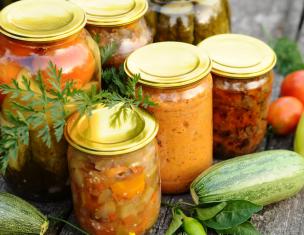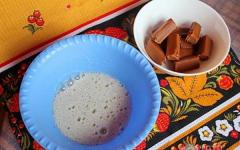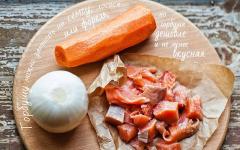Previously, blueberries were considered a wild berry, but recently the fashionable trend of growing this berry in gardens has been gaining momentum. And this is not surprising, because these tiny and very tasty berries can relieve stomach problems, improve blood composition and even cure coughs. And during the Second World War, British pilots feasted on blueberries and blueberries to improve their eyesight. Well, since this beautiful berry has reached our latitudes, the question of how to properly store it became quite natural.
How to choose a good berry?
You need to buy only ripe blueberries, since after picking the delicious berries no longer ripen. Therefore, it is extremely important to choose only blue berries that do not have reddish tints. In addition, the blueberries must be quite strong and elastic. You should not buy watery and soft berries, as well as berries with mold.Anyone who grows blueberries in their own garden needs to know that the taste of the berries is greatly influenced by weather conditions. For example, when dry weather sets in due to lack of moisture, the growth of blueberries is significantly inhibited, and the berries often turn out to be insufficiently saturated and small. And heavy rains often lead to rotting of the skin of the fruit, which is also extremely undesirable.

You need to harvest blueberries very carefully, trying not to damage the incredibly delicate skin of the berries, otherwise preserving the harvest will be very problematic.
Fresh, undamaged berries can be stored for two weeks. However, ideally, after purchasing or picking blueberries, it is recommended to either eat them immediately or process them. After all, if juice begins to form in containers with stored berries or moisture appears, the blueberries will become unfit for consumption. In addition, during storage in the refrigerator, it can be affected by diseases such as anthracnose or gray rot.
Freezing blueberries
Blueberries freeze well. By the way, it is strictly not recommended to wash it before freezing, since under the influence of water the skin of the berries almost always becomes hard. Douse blueberries with water immediately before serving, after the berries are removed from the freezer.
In order to freeze blueberries, place the berries in tightly closed containers, leaving about three centimeters of free space - there is no need to fill the blueberries to the top. Containers filled in this way are sent to the freezer. You can also freeze the berries in a syrup made from water and sugar in a ratio of 4:3. The berries are poured with this syrup directly into containers, after which the container is tightly closed and placed in the freezer.
If you plan to use frozen berries to prepare various dishes, it is important to try to prevent them from completely thawing before adding them to the prepared dishes. This trick will preserve their structure, prevent the berries from releasing juice and prevent the dish from discoloring.
Drying blueberries
Another option to preserve blueberries for the winter is to dry them in the oven. The berries are sorted and cleaned of foreign impurities, after which they are thoroughly washed and placed in a colander so that the water completely drains from the blueberries. Then the berries are placed on a baking sheet and placed in an oven preheated to forty-five to fifty degrees. The blueberries are kept in the oven for about two hours. Do not close the oven door completely, but stir the berries from time to time - they should dry evenly. After two hours, the temperature in the oven is increased to sixty to sixty-five degrees and the berries are dried for about another hour.Dried blueberries are transferred to suitable containers and stored in a dry place.
In addition, blueberries can always be preserved - the preparations from them also turn out incomparable!
For the winter, you can prepare both ready-made berry products and semi-finished products. The latter are perfect for boiling or jelly in the cold season, and will also be indispensable for homemade fruit juice and as a filling for pies. First of all, let's consider the option of blueberries in their own juice. The cooking process is not complicated, and the ingredients you will need are only half a kilo of sugar per 1 kilogram of berries, which must first be sorted and washed in a colander.
Blueberry pie filling
We separate the crushed berries as part of a fifth of the total volume of blueberries and crush them into a paste. Mix the resulting mass with the rest of the fruits, add sugar and mix thoroughly (for this it is best to use a wooden spoon or spatula). Next, place the container with the berries in juice on the stove and light a small fire. After bringing to a boil and simmering for up to 5 minutes, remove the pan from the gas and pour the contents into jars. We place the filled container for sterilization in another saucepan or high basin, for liter containers we set it to half an hour, and for smaller or larger containers we lower or increase the blanching time by 10 minutes for every half liter.
If you have an abundance of blueberries, winter recipes can be made without cooking at all. In particular, fresh berries can be dried quickly and inexpensively. To do this, wash them in running water and let it drain, placing the blueberries in a sieve, which we then place on a baking sheet in a preheated oven. We don’t close the door, keep the gas low, shake the berries from time to time so that the moisture evaporates from them evenly. You can store the resulting semi-finished product in a box or bag right in the kitchen cabinet, and to use it, just put the blueberries in water so that they swell slightly. Then you can use the fruits in compote or as a filling for dumplings and pies.

Blueberries
There are other no-cost recipes, for example, berries cooked without sugar. Apart from them, you don’t need anything, not even water. First, take some of the fruits and squeeze out the juice, which should be at least a glass. The process is simple, but labor-intensive: first we grind the blueberries through a strainer, and then we put the resulting pulp without peel into a gauze bag and squeeze it out. You can then put the cake into compote or blueberry jelly, and pour the juice into a saucepan, put a kilogram of berries in it and, after boiling, cook for 5 minutes. Then pour the finished product into jars and close. By adding sugar to an open twist in winter, you get jam, and if you also dilute it with water, you get compote.
The following recipes, in which you will learn how else you can prepare and preserve blueberries for the winter, are offered to those who love similar products. Let's start with the most liquid option - confiture. To cook this delicacy you will need for every 500 grams of blueberries a glass of sugar (heaped), half a lemon and about 15 grams of pectin, preferably in powder. First, the washed berries are placed in a pan and sprinkled with sugar until all raw materials are completely exhausted.

Berry confiture
Then, when the juice appears, squeeze half a lemon into the same container through cheesecloth and pour in the pectin. We add the zest to a compote made from leftover berries and fruits. Leave the resulting mixture for about another half hour to release more juice from the berries, and then put the pan on low heat. Cooking time depends on how many blueberries you cook at a time, and how juicy the berries are in the harvest. In any case, you need to cook until the mass thickens. All that remains is to pour the hot confiture into sterilized jars and screw on the metal lids. Turn the container upside down and cover it with something warm to cool gradually.
If you do not have the opportunity to buy pectin, you can get a product with a high content of pectin by boiling berry cake and fruit cores, cooling the strained broth in the refrigerator and waiting for it to thicken.

Pectin for thickening
For jam we take blueberries, sugar and water in equal parts, that is, per kilogram of berries you will need the same amount of sand and a liter of water. Place the sorted, washed in running water and dried fruits in sugar syrup made from a fifth of sugar and the entire volume of water specified in the recipe. Since the sweet solution is already boiling when we immerse the berries in it, we simply boil them for 10 minutes and then pour in all the remaining sugar. The brew must be stirred constantly, while being careful not to damage the berries. The jam is ready when it thickens and a drop on the plate does not spread. If you add a pinch of citric acid, the product will last longer. Place the jam in the jars and close tightly.
To make marshmallows at home, you will need only 600 grams of granulated sugar per kilo of berries. After thoroughly washing and sorting the berries, place them in a saucepan and heat them in a water bath (so as not to burn) until they soften. Next, you need to crush the blueberries in a sieve, resulting in a pulp without peel and seeds. Add sugar and put it on gas again, now without a water bath, cook until a very thick mass is obtained, stirring constantly. We transfer the pastilles into containers with lids and place them in a cool cellar.
Many ways blueberries can be prepared have been described here, but traditional winter twist recipes have been saved for last. Compote is not very popular today, so we will look at regular jam. For it we take a quarter liter of water and one kilo of berries and sugar. Place the latter in water heated over a fire and cook the syrup. We wash the berries and sort them carefully. The sugar solution should become quite thick, so stir occasionally to prevent it from burning to the bottom and walls of the pan.

Blueberry jam
When the syrup is ready, remove the container from the stove and wait for the thick sweet mass to cool. Then we take the already dried berries and immerse them in a sugar solution, after which we put them on the fire again. When bubbles appear, we begin to stir regularly (it is best to use a wooden spoon or spatula), and cook for no more than half an hour so that the berries do not become sour. Then quickly pour into jars and close.

Preparation of sugar syrup
Recipes for berries grated with sugar are no less popular. Next, we will tell you how to prepare blueberries for the winter with granulated sugar and without any cooking at all. We take ripe washed fruits and the same amount of sugar by weight, that is, in a 1:1 ratio. The classic option is to crush the berries and then grind them through a strainer. But you can cope with the task faster by chopping blueberries in a blender, however, in this case, fragments of skin and seeds will be mixed with the pulp. Regardless of the method of processing the fruits, they should be thoroughly mixed with sugar and left for 15-20 minutes to allow it to dissolve. We sterilize the jars and, while they are hot, put the prepared mass inside and immediately roll them up for the winter.
Blueberry wine - an elementary recipe
And finally, let's move on to a very interesting recipe and learn how to make homemade blueberry wine. Using a regular wooden masher we crush the berries, of which we need about 4 kilograms. Carefully place them in a large 10-liter bottle, fill it with 2 liters of water and, after tightening the neck with gauze, put it in a warm and dark place for 5 days. Then you need to strain the resulting tincture through several layers of gauze, throw away the berries, and pour the liquid into a bottle. There we pour 1.5 kilos of sugar and 300 grams of linden honey, dissolved in 1.5 liters of water.
We plug our container with a rubber stopper with a tube from a dropper passed through it (through a small hole made in advance), the other end of which is inserted into the lid of a jar of water, lowering it to the bottom. In the same lid we make another hole for air to escape. All this is necessary so that the wine does not resemble compote. Leave it for a month and a half in a dark place, then throw out the water from the jar and fill it with fresh water. We put the bottle away again, now in a cool place and for 2 months. After this period, all that remains is to pour the wine into bottles and seal tightly.
How to freeze blueberries? If you have done the freezing correctly, you can extend the shelf life of the berries by an average of 3-6 months by removing the required number of berries from the freezer to prepare the next dish. Look how many interesting ones I have - for every taste. Sorbet, smoothies, juice, pies, casseroles and even lemonade. And also delicious oatmeal porridge with berry filling. Everything you need for a healthy diet all year round (by the way, blueberries have almost no contraindications). You can even give it to children from one and a half years old, and if the berry is grown at home, then to infants.
So it's definitely worth the tinkering: freeze the beautiful dark blue berries with a bluish tint and enjoy them throughout the fall and winter. And in early spring, juicy berry pastries, drinks and desserts with blueberries will be appropriate.
The easiest way to freeze blueberries
Of course, this method is far from new: the easiest way to freeze blueberries is in bulk in plates. You should not wash the berries before freezing to avoid damaging them. Sort and place on large flat plates in a single layer. Place in the freezer, check after a couple of hours - if the berries are frozen, pour them into a bag and tie tightly, after releasing the air. It is convenient to use a ziplock bag.
The disadvantages of freezing in bulk are obvious: freezers are not rubber, sometimes it can be a problem to fit even 1 plate. So you can freeze a very small amount of berries this way. What if there are 3-4 buckets of them?
How to freeze blueberries in large quantities with whole berries
This is the method I learned to use. It is suitable if you have large wide food grade plastic containers with a lid. You will also need cling film.
Sort through the berries and place them in a container in one layer. Cover it with film and cut it to the size of the container. The bottom layer of berries should be completely covered with cling film. Place the top layer on it, cover it again with film and do this until the container is filled to the top. Cover it with a lid and place it in the freezer. Let it be frozen and stored like this: in winter you can open the container and easily take any number of berries, because they were frozen in small portions and did not stick together, since they were laid in one layer.
How to freeze blueberries with whole berries and sugar
Another freezing method, which has only one, but significant drawback - you will need a lot of sugar. Prepare blueberries as above: pick, but do not wash. Pour sugar into a large saucepan and stir gently with a silicone spatula. Place the berries along with granulated sugar in plastic containers, close with lids and place in the freezer for freezing and storage. Blueberries prepared in this way can be used to prepare compotes, jelly and other drinks.
How to freeze pureed blueberries with sugar
Preparation is not for everyone, of course. But it can be stored very compactly: put it in small jars (for example, baby food) and screw on the lids. You need to prepare blueberries exactly the same way - look at the recipe link, do the same with blueberries, put them in storage containers and freeze.
Blueberries are one of the most difficult foods to preserve, as they quickly become moldy. But first of all, blueberries go sour very quickly! At the same time, blueberries are the most powerful “pickling agent” for natural products. But fermentation is best when its process is controlled. Without this, the taste and texture of fresh berries will deteriorate. The power of blueberry fermentation should not be underestimated. Collect blueberries in advance and in a specially prepared and sterilized barrel or glass jar of appropriate capacity. A barrel or glass jar half filled with berries can foam and overflow if the berries are not stirred 1-2 times a day. The only and reliable way to prevent blueberries from turning sour is to freeze them. People who have experience storing blueberries not frozen consider it necessary to observe the following conditions: it is necessary to pick blueberries quickly, cleanly and without impurities, and always carefully and only with your hands, so that they do not wrinkle. Then they should be placed in a barrel and left alone for the whole summer, without choosing blueberries. Next, keep the dishes with berries cold, which is the most important thing. If it is not possible to fulfill most of these conditions, you need to get rid of the air among the berries in a barrel or jar to prevent the appearance of mold. Another way to preserve blueberries is to partially boil the berries. Boil some of the berries and pour this broth over the remaining berries so that they are completely covered with liquid. Berries left exposed to air may develop mold. If there is no air among the berries, then mold will only be able to grow on the surface, from where it can be easily removed. If you do not freeze blueberries stored in an earthen cellar in barrels or glass jars, then in this case you need to use one of the following methods for preserving blueberries.
1. Preservation using leaves. As has been the case for many generations of people, the leaves of Nardosmia colda are still widely used to preserve blueberries; sorrel and “wild rhubarb” are also suitable for this purpose. In order for the leaves to become soft and lie flat, they must first be kept in cold water. Spread a thick layer of leaves over the surface of the blueberries, tuck in around the edges, press until the juice rises above the level of the leaves or as far as possible to get rid of air between the berries and leaves. Mold will only grow on the surface of Nardosmia or rhubarb leaves, from where it can be easily removed. According to another method, the Nardosmia leaves need to be boiled in half, let the water drain a little and spread them hot in a thick layer of 1-2 inches over the berries and the walls of the barrel.
2. Preservation by sugar. Sugar will keep the blueberries from going sour if you add enough of it and keep the berries cold. Every few inches of blueberries placed in the barrel should be layered with sugar. Sprinkle sugar on top in a layer of at least 1 inch, just as all the berries are covered. If you take too little sugar or keep the berries in too warm a place, keep an eye on it! Sugar feeds bacteria and the berries will sour more than usual. The cold in which you keep blueberries reduces the amount of sugar needed, and at the same time more vitamin C is preserved.
3. Filling blueberries with fat. Solid internal fat is taken from the insides of caribou or moose, or lard can be melted and poured over berries in barrels or jars to the top. These fats will flow and harden like paraffin. You can remove the congealed fat when using the berries, or eat it along with the berries if you cook them.
4. Filling with seal or fish oil - can be used in a similar way to isolate the berries from air. To be safe, the liquid should cover the berries, and a layer of fat should float on top. This method is good when you plan to eat berries with this fat or use them in “akutuk”. These berries should be kept very cold and used before the fat goes rancid. Old fat tastes like mold and becomes bitter and difficult to remove from the berries, so it's best not to use it.
5. Filling with vegetable oil - used in the same way as seal oil. Peanut butter is best because it solidifies at low temperatures and can be skimmed off like solid fat or eaten with berries. To be safe, you need to cover the berries with something else to protect them from dirt and mice.
For you!
http://medicadverts.ru
Previously, blueberries were considered a wild berry, but recently the fashionable trend of growing this berry in gardens has been gaining momentum. And this is not surprising, because these tiny and very tasty berries can relieve stomach problems, improve blood composition and even cure coughs. And during the Second World War, British pilots feasted on blueberries and blueberries to improve their eyesight. Well, since this beautiful berry has reached our latitudes, the question of how to properly store it became quite natural.
How to choose a good berry?
You need to buy only ripe blueberries, since after picking the delicious berries no longer ripen. Therefore, it is extremely important to choose only blue berries that do not have reddish tints. In addition, the blueberries must be quite strong and elastic. You should not buy watery and soft berries, as well as berries with mold.
Anyone who grows blueberries in their own garden needs to know that the taste of the berries is greatly influenced by weather conditions. For example, when dry weather sets in due to lack of moisture, the growth of blueberries is significantly inhibited, and the berries often turn out to be insufficiently saturated and small. And heavy rains often lead to rotting of the skin of the fruit, which is also extremely undesirable.

You need to harvest blueberries very carefully, trying not to damage the incredibly delicate skin of the berries, otherwise preserving the harvest will be very problematic.
Fresh, undamaged berries can be stored for two weeks. However, ideally, after purchasing or picking blueberries, it is recommended to either eat them immediately or process them. After all, if juice begins to form in containers with stored berries or moisture appears, the blueberries will become unfit for consumption. In addition, during storage in the refrigerator, it can be affected by diseases such as anthracnose or gray rot.
Freezing blueberries
Blueberries freeze well. By the way, it is strictly not recommended to wash it before freezing, since under the influence of water the skin of the berries almost always becomes hard. Douse blueberries with water immediately before serving, after the berries are removed from the freezer.

In order to freeze blueberries, place the berries in tightly closed containers, leaving about three centimeters of free space - there is no need to fill the blueberries to the top. Containers filled in this way are sent to the freezer. You can also freeze the berries in a syrup made from water and sugar in a ratio of 4:3. The berries are poured with this syrup directly into containers, after which the container is tightly closed and placed in the freezer.
If you plan to use frozen berries to prepare various dishes, it is important to try to prevent them from completely thawing before adding them to the prepared dishes. This trick will preserve their structure, prevent the berries from releasing juice and prevent the dish from discoloring.
Drying blueberries
Another option to preserve blueberries for the winter is to dry them in the oven. The berries are sorted and cleaned of foreign impurities, after which they are thoroughly washed and placed in a colander so that the water completely drains from the blueberries. Then the berries are placed on a baking sheet and placed in an oven preheated to forty-five to fifty degrees. The blueberries are kept in the oven for about two hours. Do not close the oven door completely, but stir the berries from time to time - they should dry evenly. After two hours, the temperature in the oven is increased to sixty to sixty-five degrees and the berries are dried for about another hour.
Dried blueberries are transferred to suitable containers and stored in a dry place.
In addition, blueberries can always be preserved - the preparations from them also turn out incomparable!
http://www.asienda.ru
 We are all well aware of blueberries - a berry that grows widely in the northern regions of Eurasia and North America.
We are all well aware of blueberries - a berry that grows widely in the northern regions of Eurasia and North America.
Blueberries grow especially abundantly in the forests of Siberia. In addition, in many countries around the world today blueberries are cultivated on an industrial scale. The cultivation of blueberries is well developed and in every large store today you can see this berry for sale.
But why are blueberries so popular? What beneficial substances are contained in blueberries? Let's find out what the experts say.
What are the benefits of blueberries?
Blueberries are the closest relative of another forest berry - blueberries. The dark pigment anthocyanin, contained in blueberries and blueberries, helps improve vascular elasticity, preventing the risk of heart attack and stroke.
Anthocyanin is also found in black currants and lingonberries, but there is much more of it in blueberries.
Obese people have a particularly high risk of diabetes, which narrows blood vessels, and overweight people are at risk of developing atherosclerosis, when fatty plaques accumulate on the walls of blood vessels.
As a result of the narrowing of blood vessels, pressure rises, which leads to hypertension and can cause a stroke.
Blueberries can be a real salvation for anyone who has problems with blood pressure due to decreased vascular tone.
Daily consumption of blueberries reduces the sensitivity of the walls of blood vessels, which leads to their narrowing, and helps them pass blood, delivering oxygen and nutrients to all organs and systems of our body.
For people with digestive problems, dietary fiber - pectins contained in blueberries - will be useful. Pectins stimulate the intestines and cleanse it of accumulated toxins.
Blueberries have a diuretic effect, which helps lower blood pressure by reducing the volume of fluid in the body.
How to store blueberries?
 When buying in a store, carefully inspect the berries - they should not be rotten, mold or squeezed out juice.
When buying in a store, carefully inspect the berries - they should not be rotten, mold or squeezed out juice.
It is better to eat purchased blueberries on the day of purchase. But if you need to preserve blueberries for some time, you can use the following tips.
Fresh blueberries can be stored for 2-3 days in the refrigerator by placing the berries in a plastic container.
Blueberries last much longer if frozen. At the same time, almost all useful substances remain in the berries, unlike berries that are subjected to heat treatment during the preparation of compote or jam.
There are practically no useful substances left in jam and compote, since all vitamins are destroyed when heated above 60°C.
Blueberries can also be stored dried for a long time. But it should be remembered that dried berries contain much less useful substances than frozen ones.
 Blueberries need to be frozen so that they do not freeze into one monolithic lump, but remain in the form of crumbly frozen berries. To do this, scatter the blueberries in one layer and place them in the freezer. And only after the berries are frozen, pour them into a bag.
Blueberries need to be frozen so that they do not freeze into one monolithic lump, but remain in the form of crumbly frozen berries. To do this, scatter the blueberries in one layer and place them in the freezer. And only after the berries are frozen, pour them into a bag.
In this case, they will no longer freeze into a monolithic mass, and you can store the berries in the freezer for a long time.
What to cook with blueberries?
The greatest amount of useful substances is preserved in berries that have not been subjected to heat treatment. Therefore, if you want blueberries to bring maximum benefits to the body, then you should not make jam or compote from them.
Better prepare a delicious sweet salad.
Take 100 grams of blueberries and mix with 100 grams of ripe orange.
http://beautiful-and-happy.ru









